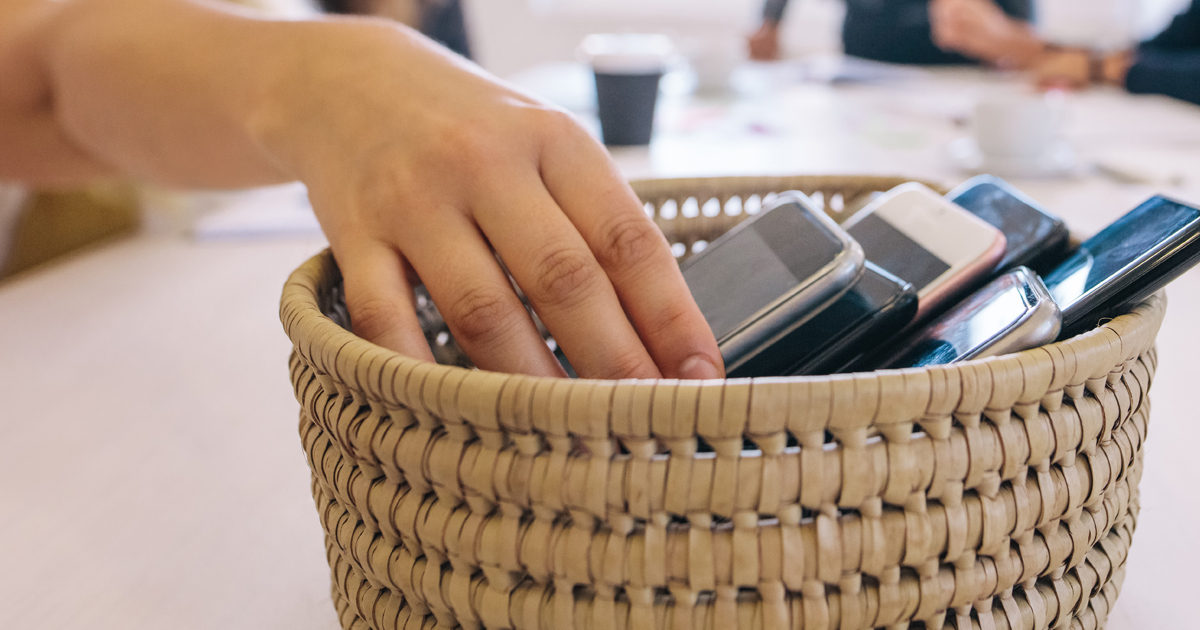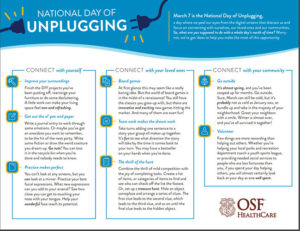
Three steps to help you have a healthy relationship with technology
As adults, most of us are tethered to our phones. In fact, we often feel something is missing if we don’t have it.
If it’s not our phones, it’s a TV or a tablet or a laptop… In fact, a Nielsen study says adults in the U.S. consume more than 11 hours of media a day. And the younger generations are watching us as we’re glued to our screens.
With ties to depression, obesity, troubled sleep and more, what’s the best way to make sure screen time’s not getting the best of any of us?
Make a plan
The American Academy of Pediatrics recommends creating a family media use plan. Together, draft a document that lays down basic rules. Consider:
- No screens in bedrooms
- Unplugged family mealtimes
- A “media curfew” at least an hour before bedtime
- Sticking to age-appropriate content, as determined by movie, game, and TV ratings
Take a digital detox
Make a goal to unplug and stick to it.
Whether it’s a few hours a day, an hour a week or participating in National Day of Unplugging, deliberately taking the time to disconnect can help you maintain a healthy relationship with your devices.
And as an added bonus, it can help you reconnect with your loved ones, God, nature or any number of other important things in life.
Feeling lost without your screens?
We put together a downloadable guide to help you get through it!
Follow screen time limits
Infants
Dr. Ameera Nauman with OSF Medical Group – Primary Care has a pretty hard and fast rule: no screens for her youngest patients who are under the age of two. Dr. Nauman says the brain’s neural networks are developing most rapidly in the first five years and under age two, language and emergent literacy skills are better learned through personal contact.
“Their minds should be nourished with books, singing, playing, you know, getting them to move, making a playroom for them … really just engaging with them on a more personal, social level,” she advised.
Toddlers
 By the time a baby turns two they can learn words from a person on a live video chat and some interactive touch screens, but Dr. Nauman says studies show they can learn that way only when parents watch with them and re-teach the content.
By the time a baby turns two they can learn words from a person on a live video chat and some interactive touch screens, but Dr. Nauman says studies show they can learn that way only when parents watch with them and re-teach the content.
By age 3-5, the American Academy of Pediatrics says that no more than an hour of screen time is a good guideline.
School-age kids and teens
Pediatricians, including Dr. Nauman, say it’s important for parents of school age children to watch TV with them and monitor any computer or screen use. It’s important to balance screen time with other healthy behaviors. Dr. Nauman encourages teens to be active 15 minutes for every hour of screen time and she stresses limiting overall screen time to two hours a day, excluding homework.

